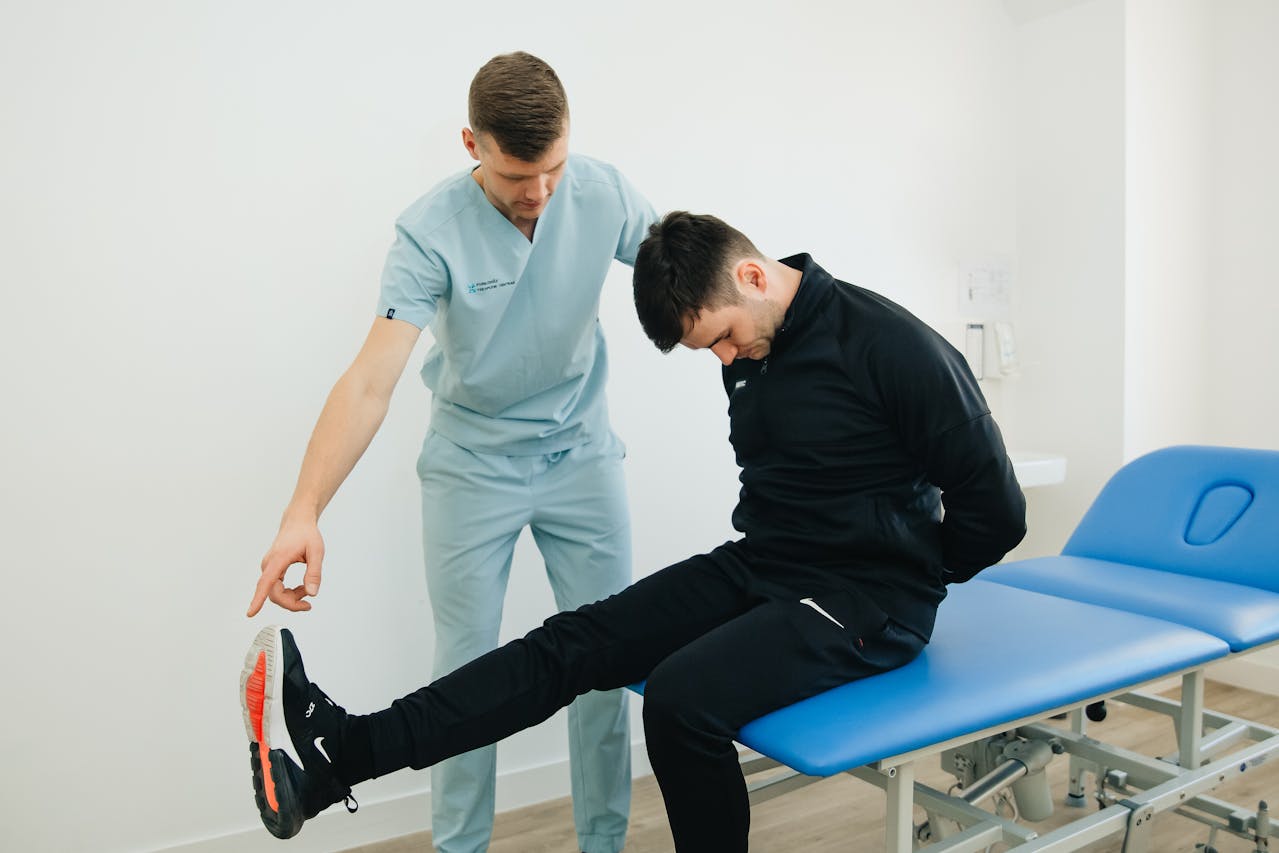Although there are a variety of other risk factors for DVT, one of the most problematic factors on any flight (and especially flying while pregnant) is prolonged sitting. Blood clots are more likely to form when legs are idle or bent because it slows blood flow. During pregnancy, blood flow is already slowed in preparation for labor; this slowed blood flow protects the mother from excessive blood loss during delivery. Combine these two and you can have a recipe for serious and life threatening issues if you aren’t properly prepared. Discuss your travel plans with your OBGYN before your flight and ensure you’re prepared to take care of yourself while in the air. This includes wearing compression hose during your travels, wearing comfortable shoes and alerting the flight attendants that you will need to get up and walk around during the flight whenever it’s safe to do so. If you’re stuck in your seat for longer periods of time, do stretches that force your muscles to work. If you can, get a seat closer to the front of the cabin and/or an aisle seat so that you have more room to stretch your legs. If you want a chance to be upgraded to first class or business class where there’s more legroom, dress professionally and cross your fingers.
Flying While Pregnant: Third Trimester
By the third trimester, your pregnancy is coming closer to its end. Because your baby is bigger, you are bigger. This means that you have a whole new host of issues to keep in mind. There are many issues at this stage regarding flying while pregnant. Most doctors do not recommend traveling in the third trimester. Some airlines do not even allow women to board a plane after their eighth month of pregnancy. This is because the risk of going into labor greatly increases during the third trimester. No one enjoys flying while pregnant, so you can only imagine how unpleasant it would be to go into labor and/or give birth while in the air.
However, if air travel is an absolute necessity, you should be extra prepared. All the risks of DVT still exist in the third trimester, and you will probably be less able to move around due to your increased belly size. Moreover, the stress of air travel and the changes in cabin pressure could possibly trigger early labor. Therefore, practice many leg exercises for air travel, and be thoroughly equipped to relax as much as possible.
In the final stages of pregnancy, you need to stay well fed and hydrated. Therefore, bring plenty of water and snacks, especially since you have no way of knowing how long you may be stuck in the airport. It is also worth remembering that you will not have the same strength or stamina in your last trimester. Give yourself plenty of time to get where you need to go so you do not feel rushed while trying to make your flight. Moreover, try to minimize the size of your carry-on and any checked luggage you’re responsible for without assistance in the baggage claim area. Besides, pregnant women are not advised to lift or pull any significant amount of weight. If you cannot comfortably lift your carry-on to the overhead bin, you may want to rethink your packing strategy or request assistance from the flight crew. Continue wearing those compression hose, wear comfortable shoes and clothing, and get up to walk the aisles whenever it’s safe to do so. Most importantly, get clearance from your OB/GYN before flying to make sure air travel is still safe for you. Otherwise, put off your plans for another time or, if it’s business related, find someone else to travel in your place, opt for a Skype meeting or reschedule for a few months after the baby is born.
Preparing for Your Flight
 No matter what stage of pregnancy you are in, you should always consult with your doctor in advance. Your doctor may have specific advice for you because every woman and every pregnancy is different. If you have other risk factors, your doctor may have additional concerns or recommendations for your air travel. You should be sure to talk to your doctor about leg stretches for long flights to allay any concerns you may have about DVT, wearing compression hose to help prevent problems or to help treat pregnancy related varicose veins and discussing other ways to ensure your health and safety while traveling. Depending on your medical history, your doctor may want to check you for signs of varicose veins and assess your personal risk for blood clots before you can fly. Be prepared for your doctor to advise you not to fly at all. In this case, be ready to cancel your plans (get flight insurance), reschedule or, in the event of business trips, find a colleague who can replace you for the trip.
No matter what stage of pregnancy you are in, you should always consult with your doctor in advance. Your doctor may have specific advice for you because every woman and every pregnancy is different. If you have other risk factors, your doctor may have additional concerns or recommendations for your air travel. You should be sure to talk to your doctor about leg stretches for long flights to allay any concerns you may have about DVT, wearing compression hose to help prevent problems or to help treat pregnancy related varicose veins and discussing other ways to ensure your health and safety while traveling. Depending on your medical history, your doctor may want to check you for signs of varicose veins and assess your personal risk for blood clots before you can fly. Be prepared for your doctor to advise you not to fly at all. In this case, be ready to cancel your plans (get flight insurance), reschedule or, in the event of business trips, find a colleague who can replace you for the trip.
If your doctor says it’s safe for you to fly, follow their advice and the advice you found in this article to ensure a safe and comfortable flight. This way, you can focus on enjoying your trip, especially if you and your partner are traveling for one of those modern, trendy “Baby Moons.”
Blood Clots During Pregnancy
If you do experience symptoms of blood clots, whether it’s during pregnancy or after flying while pregnant, there are treatment options to consider. Depending on the size of the clot, your doctor may prescribe the following:
- reduce physical exertion (to prevent loosening the clot);
- wear compression stockings (to improve the blood flow in your legs);
- anti-coagulants (to shrink clots and thin the blood), though this is rare for pregnant women due to the risks they carry;
- surgical procedures that can be used in severe cases (to surgically remove the clot).
Finally, note that the risk of DVT does not end when the baby is born. In fact, women may be at a higher risk for blood clots during their early days postpartum. After giving birth, your body is experiencing a swell of changes, including increased bleeding for nearly six weeks postpartum. This can make blood clots even more likely. Therefore, you should take caution while flying during the first several months after your baby is born in order to be safe. Once again, always consult your OBGYN before taking a long trip if you’ve been diagnosed as high risk for developing blood clots. Also, check with your pediatrician if you plan to bring the baby along, as it’s not safe for a newborn to fly for the first couple of months after birth.
Overall, no one looks forward to modern air travel, but even pregnant women cannot avoid the inconvenience from time to time. If flying while pregnant is necessary, be sure to consider all the possible issues you may experience depending on the stage of your pregnancy. Your body is already working overtime in pregnancy, so you need to give it everything it needs for a comfortable and safe flight. Be aware, be careful, be ready for anything and have a wonderful trip.











